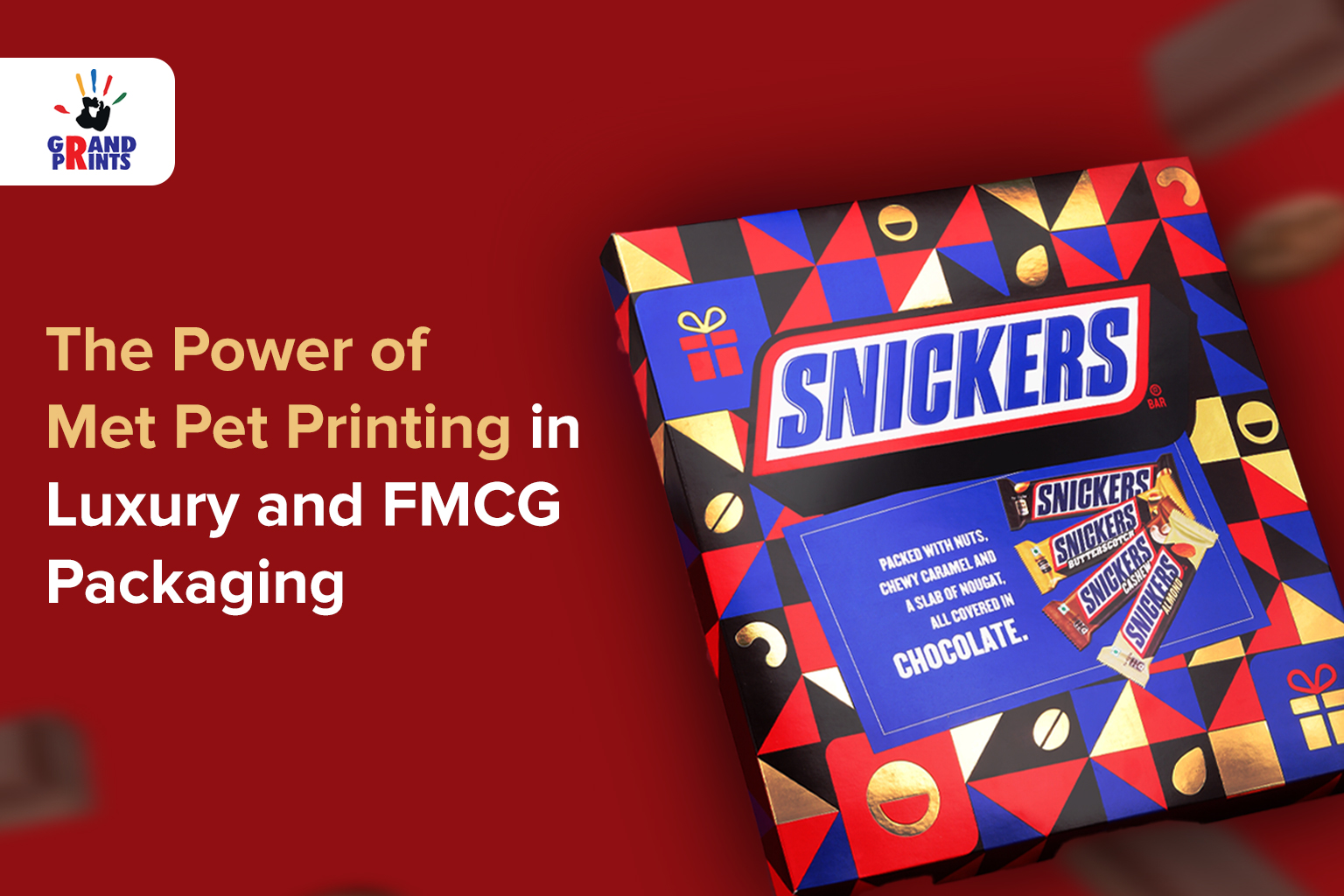What is Met Pet film and why is it used?
Met Pet film is a thin metallised polyester sheet. It provides a glossy metallic base, protects against moisture, and enhances durability.

Packaging is more than protection – it is an experience. For luxury brands and FMCG leaders, packaging has become the first handshake with customers. The choice of printing techniques decides whether a box sits unnoticed on a shelf or compels someone to pick it up. One technology making waves is Met Pet printing.
This blog explores what is Met Pet printing, why it is redefining packaging, and how both luxury and FMCG brands are leveraging its power.
Met Pet printing uses a thin layer of met pet film (metallised polyester) laminated onto carton board before applying multicolour offset printing. The result is a reflective, metallic surface that combines style with strength.
Unlike ordinary carton printing, the met pet printing process ensures a glossy or holographic sheen while still retaining durability. This blend of glamour and function makes it an excellent choice for both premium and mass-market categories.
In simple words: Met Pet packaging does not just look good, it also performs better.
Luxury packaging is not about volume. It is about leaving a lasting impression. Met printing has become a preferred choice for high-end cosmetics, perfumes, jewellery boxes, and festive editions.
Here’s why premium brands swear by it:
Did you know?
According to Packaging Strategies, nearly 72% of consumers say packaging design influences their purchase decisions, and reflective finishes like Met Pet strongly impact premium categories.
FMCG packaging has different needs compared to luxury. It must survive long supply chains, resist environmental factors, and yet remain attractive to shoppers. This is where met pet printing in India has exploded in demand.
Applications include:
For FMCG, Met Pet offers not just aesthetics but also barrier properties that protect freshness and aroma.
Many ask: what is Met Pet printing process and how does it differ from other methods?
Here’s a simplified flow:
This multi-stage approach ensures both visual appeal and functional performance.
While the metallic sheen grabs attention, the unsung hero is functionality. Met Pet cartons act as an additional protective shield.
This makes met printing more than decoration; it is a smart choice for products that demand both safety and style.
Earlier, Met Pet was seen as a luxury-only choice. But now FMCG giants are upgrading their packs to look more premium. Here is why:
Did you know?
India’s packaging industry is expected to grow at 26.7% CAGR in the FMCG segment by 2028, driven by demand for premium-looking cartons.
The different types of printing evolve with market shifts, and Met Pet is no different. Some current trends include:
These trends show that Met Pet is not just about shine it is about storytelling.
Luxury vs. FMCG: Same Tool, Different Roles
The power lies in its adaptability. Whether it’s a perfume box or a snack pack, met pet printing in India delivers equal impact.
Packaging is the silent salesman of every brand. For both luxury and FMCG industries, Met Pet printing has become the golden middle ground—delivering shine, strength, and shelf impact.
From the met pet printing process that combines metallic film with offset technology, to its adaptability across industries, it offers unmatched value. Whether your brand sells luxury skincare or everyday snacks, the question is no longer what is Met Pet printing—but how quickly you can make it part of your packaging strategy.
Met Pet film is a thin metallised polyester sheet. It provides a glossy metallic base, protects against moisture, and enhances durability.
Yes. Modern boards and water-based inks allow recyclability, though sustainability depends on the finishing used. Many brands in India now balance shine with eco-responsibility.
Indian markets value festive, luxurious finishes. From weddings to festivals, packaging plays a symbolic role. Met Pet printing in India meets this cultural demand while protecting products.
FMCG, cosmetics, pharmaceuticals (premium segments), and seasonal gifting are the top adopters.